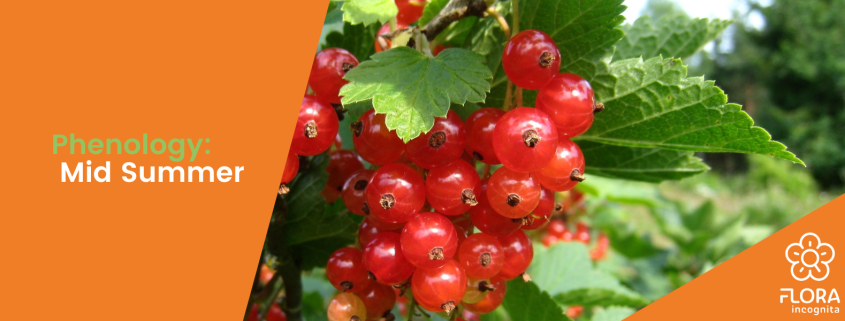Phenology: Midsummer – Long Days, Warm Nights
When we think of midsummer, we might hear the buzzing of insects, the chirping of birds, or the joyful laughter of children fully enjoying their summer vacations. Midsummer brings us a plethora of outdoor activities and unforgettable moments that will hopefully stay with us for a long time. However, climate change does not spare changes in nature. It is crucial to document specific key points every year to make these changes visible. So, let’s take a closer look at what characterizes the phenological midsummer:
Linden Trees in Bloom
The blossoming of linden trees marks the beginning of midsummer. To differentiate them from winter linden trees, you can examine the leaf hairs: the summer linden has small white hairs on the entire underside of the leaves and on the branches, while the winter linden is only hairy on the veins and in the vein angles on the underside of the leaves. Linden flowers can be collected for tea, and due to their high sugar content in nectar, they are also an essential late food source for many insects.
Ripening of Currants
Ripe currants are the first sweet summer fruits that can be “wildly” harvested in Central Europe. However, modern cultivated varieties are no longer identical to the original Ribes rubrum. To enhance the aroma and optimize cultivation, other currant species were crossed (or the color: White currants are just a color variant of the red ones). Black currants (Ribes nigrum), incidentally, are closer relatives to gooseberries than to red currants and ripen slightly later, depending on the cultivation. The bushes of black currants have a smell that some find “unpleasant.” Nevertheless, an important perfume extract is obtained from the flower buds!
Harvesting Sweet Cherries
Sweet cherries (Prunus avium), also known as bird cherries (the species name reveals it!), belong to the rose family. Particularly popular among children and those with a sweet tooth are the well-known cultivated forms, such as the heart cherry (Prunus avium subsp. juliana), because the wild form Prunus avium L. subsp. avium has tiny, black, and bittersweet fruits. It typically thrives in oak-hornbeam mixed forests and can grow up to over 20m in height. The ripening of cultivated sweet cherries is a significant indicator of midsummer. In 2021, Germany recorded 27,340 tons, Austria 6,210 tons, and Switzerland 4,415 tons of harvest – for comparison: Turkey leads the list of the world’s largest sweet cherry producers with an annual production of 689,834 tons.
Barley Harvest Time
Barley (Hordeum vulgare) belongs to the grass family (Poaceae). With an impressive cultivation history of around 10,000 years, it is one of the cornerstones of European agriculture. Winter barley plays a significant role in phenology. Sown in autumn, it thrives initially in a pleasant 10°C and is often the first crop harvested from the fields, even before other cereal crops. This harvest time is another indicator of midsummer. In Germany, winter barley is cultivated on approximately 1.24 million hectares, while spring barley thrives on only about 0.5 million hectares. Overall, Germany harvests about 10 to 12 million tons of barley annually.
This article was featured in the Flora-Incognita app as a story in the summer of 2023. The app provides intriguing information about plants, ecology, species identification, as well as tips and tricks for plant identification. Why not take a look?

